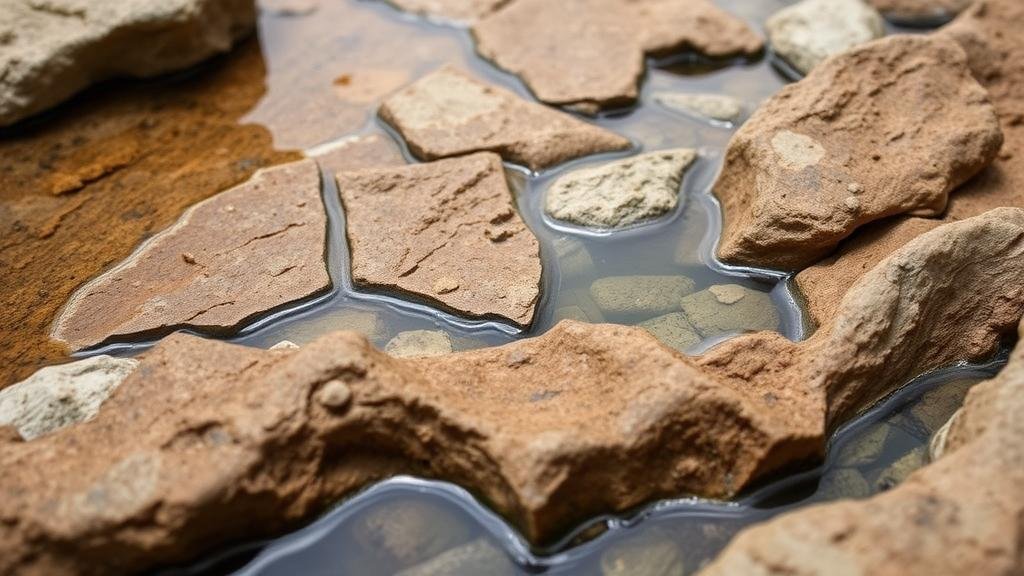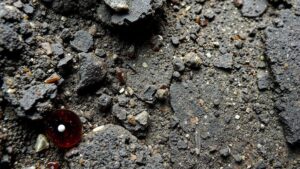Fossilized Rivers of Time: Discovering Ancient Aquatic Ecosystems in Stone
Fossilized Rivers of Time: Discovering Ancient Aquatic Ecosystems in Stone
The earth is a vast book of history, with each layer of rock telling stories of ancient life, environments, and ecosystems long vanished. Among these geological narratives, fossilized rivers serve as windows into the past, revealing the intricate details of aquatic ecosystems that existed millions of years ago. For rockhounds and mineral collectors, understanding these fossilized features not only enhances collecting endeavors but also fosters a deeper appreciation for the natural world. This article will explore the significance of fossilized rivers, the types of fossils they preserve, and practical tips for collectors interested in these ancient aquatic ecosystems.
Understanding Fossilized Rivers
Fossilized rivers are essentially ancient riverbeds that have been preserved in sedimentary rock. Over millions of years, the dynamic processes of deposition and erosion have led to the burial of riverbanks and aquatic life under layers of sediment. Through lithification, these layers transform into sedimentary rock, capturing the outlines and characteristics of the environments that dominated at the time. A prime example is the Green River Formation located in Colorado, Utah, and Wyoming, which dates back to the Eocene Epoch (approximately 50 million years ago) and boasts some of the richest fossil deposits, including fish, plants, and invertebrates.
The Ecosystems within Fossilized Rivers
Fossilized rivers provide a remarkable record of ancient ecosystems, revealing insights into their biodiversity. Within these ecosystems, various organisms thrived, and studying these fossils can teach collectors about past climates and ecological relationships.
- Fish Fossils: The presence of fish fossils, such as the famed Knightia and Diplomoceras, in the Green River Formation indicates a thriving aquatic community. Fossils of individual fish can be nearly complete, showcasing not only skeletal structures but often the color patterns on their bodies, thanks to exceptional preservation.
- Invertebrate Fossils: Fossils of crustaceans, mollusks, and corals found in these formations highlight the diversity of life. For example, the fossilized remains of shrimps and various fresh-water mollusks provide evidence of the types of ecosystems that once existed.
- Plant Fossils: Plants, too, are periodically found preserved in ancient river sediments, offering a glimpse into the flora that relied on these waterways. Leaf imprints from cycads and ferns illustrate the lush greenery that surrounded these aquatic environments.
Scientific Data and Measurements
Scientific research of fossilized rivers involves detailed stratigraphic studies and the application of paleontological techniques. Techniques such as radiometric dating help establish the timeline of sediment deposition, providing context for the fossils found within.
For example, paleobotanists studying sediment cores from the Green River Formation have identified around 200 different plant species, contributing to our understanding of climate conditions during the Eocene. Also, statistical analyses of fish fossil morphology can indicate variations in species over geological time, providing crucial information regarding evolutionary trends.
Practical Tips for Collectors
For those eager to collect fossils from ancient riverbeds, there are important strategies to consider:
- Choose the Right Location: Research regions known for fossilized rivers, such as the Green River Formation, or the famous La Brea Tar Pits. Local paleontological societies can provide valuable insights into sites open to collectors.
- Understand Legal Regulations: Always check local laws regarding fossil collecting. Many areas have designated sites where collection is allowed, while others may be strictly protected.
- Equip Yourself So: Carrying basic tools like chisels, hammers, and sturdy gloves can enhance your collecting experience. A brush is also useful for cleaning dirt off fossil specimens once extracted.
Real-World Applications and Takeaways
Fossilized rivers are not only an exciting frontier for rockhounds but also crucial for scientific study. They provide critical insights into climate change, evolutionary biology, and even inform modern conservation efforts. By understanding ancient ecosystems, we gain valuable information that can influence aquatic conservation today.
To wrap up, the journey into the world of fossilized rivers offers both education and fascination for collectors and enthusiasts alike. Each fossil is a testament to ancient life, embedded in stone as a reminder of our planets rich and diverse history. As you embark on your collecting journey, remember that with each specimen, you are unearthing a piece of time, echoing the life that once flourished in these ancient waterways.



